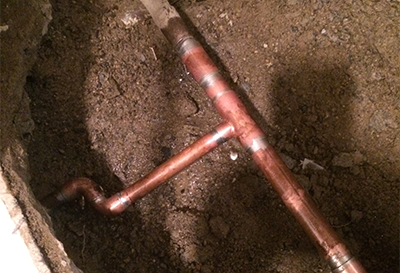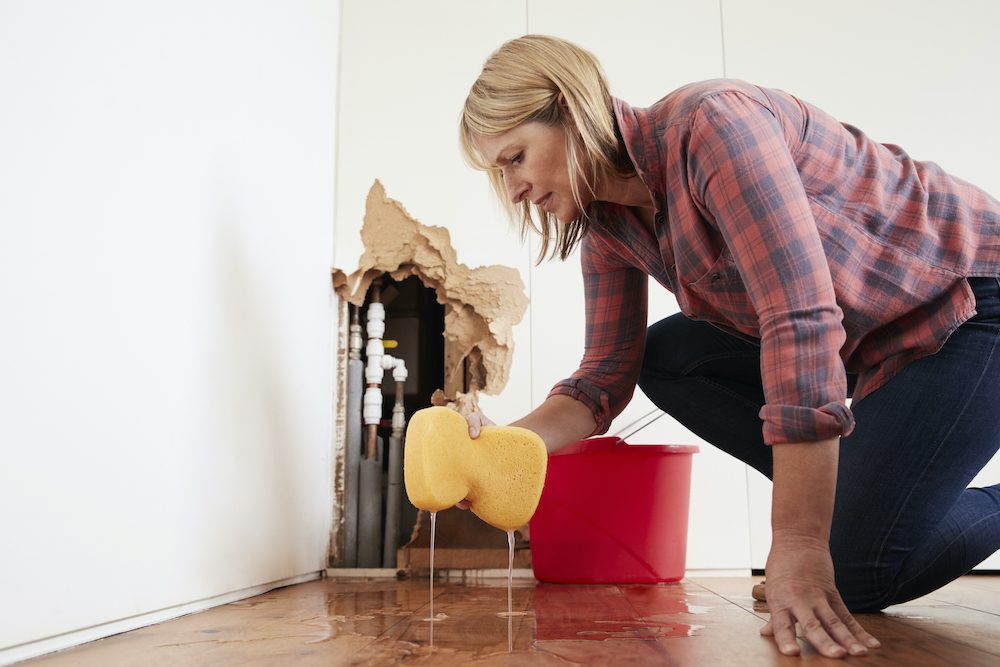Exactly how to Inspect If Your House Has a Concealed Leakage
Exactly how to Inspect If Your House Has a Concealed Leakage
Blog Article
The article down below involving Locating water leaks is fairly engaging. Don't skip it.

Early discovery of leaking water lines can alleviate a possible calamity. Some tiny water leakages might not be visible.
1. Examine the Water Meter
Examining it is a guaranteed method that helps you uncover leakages. If it moves, that suggests a fast-moving leak. This suggests you might have a slow leak that might also be underground.
2. Check Water Usage
Assess your water bills as well as track your water consumption. As the one paying it, you ought to observe if there are any type of disparities. If you detect sudden changes, in spite of your intake coinciding, it means that you have leakages in your plumbing system. Bear in mind, your water costs need to drop under the same variety on a monthly basis. A sudden spike in your bill shows a fast-moving leakage.
At the same time, a constant increase monthly, despite the exact same practices, reveals you have a slow-moving leakage that's additionally gradually intensifying. Call a plumber to completely inspect your home, specifically if you really feel a warm area on your flooring with piping underneath.
3. Do a Food Coloring Examination
When it involves water usage, 30% comes from bathrooms. Test to see if they are running correctly. Decline specks of food color in the tank as well as wait 10 mins. If the color somehow infiltrates your bowl during that time without flushing, there's a leak between the storage tank and also dish.
4. Asses Exterior Lines
Don't forget to check your exterior water lines as well. Test spigots by affixing a garden hose. Should water leak out of the link, you have a loose rubber gasket. Replace this as well as guarantee all links are limited. It will help obtain it expertly checked out and also kept every year if you've obtained a lawn sprinkler system. One tiny leakage can squander lots of water and also spike your water bill.
5. Inspect as well as Assess the Circumstance
Home owners must make it a practice to check under the sink counters as well as also inside cupboards for any kind of bad odor or mold and mildew development. These two warnings show a leakage so punctual focus is required. Doing regular assessments, also bi-annually, can conserve you from a significant problem.
If you know your residence is currently old, maintain a careful eye on your heaters, pipes, pipelines etc. Look for stainings as well as damaging as many pipes as well as appliances have a life expectancy. They will certainly likewise naturally degrade because of tear and wear. If you suspect leaking water lines in your plumbing system, don't wait on it to rise. Call a professional plumber immediately so you do not end up with an awful mess in your house.
Early detection of dripping water lines can reduce a possible disaster. Some little water leaks may not be noticeable. Examining it is a guaranteed method that helps you uncover leaks. One small leakage can lose tons of water and increase your water costs.
If you suspect dripping water lines in your plumbing system, do not wait for it to intensify.
WARNING SIGNS OF WATER LEAKAGE BEHIND THE WALL
PERSISTENT MUSTY ODORS
As water slowly drips from a leaky pipe inside the wall, flooring and sheetrock stay damp and develop an odor similar to wet cardboard. It generates a musty smell that can help you find hidden leaks.
MOLD IN UNUSUAL AREAS
Mold usually grows in wet areas like kitchens, baths and laundry rooms. If you spot the stuff on walls or baseboards in other rooms of the house, it’s a good indicator of undetected water leaks.
STAINS THAT GROW
When mold thrives around a leaky pipe, it sometimes takes hold on the inside surface of the affected wall. A growing stain on otherwise clean sheetrock is often your sign of a hidden plumbing problem.
PEELING OR BUBBLING WALLPAPER / PAINT
This clue is easy to miss in rooms that don’t get much use. When you see wallpaper separating along seams or paint bubbling or flaking off the wall, blame sheetrock that stays wet because of an undetected leak.
BUCKLED CEILINGS AND STAINED FLOORS
If ceilings or floors in bathrooms, kitchens or laundry areas develop structural problems, don’t rule out constant damp inside the walls. Wet sheetrock can affect adjacent framing, flooring and ceilings.
https://www.servicemasterbyzaba.com/blog/how-to-detect-water-leakage-in-walls/

I found that write up on Top leak detection hacks while doing a lookup on the search engines. For those who enjoyed our blog posting please make sure you remember to share it. Thank-you for your time spent reading it.
Report this page